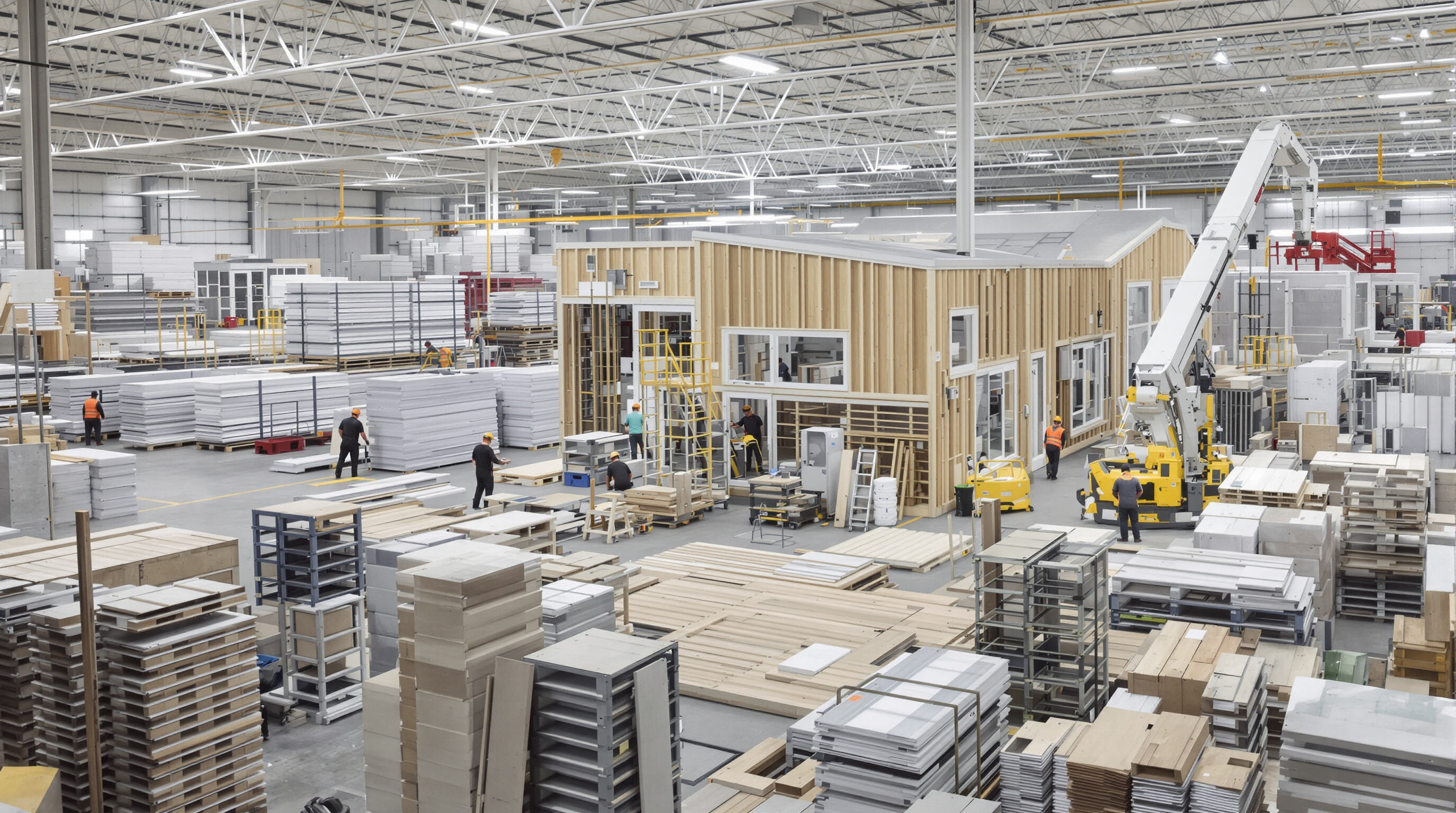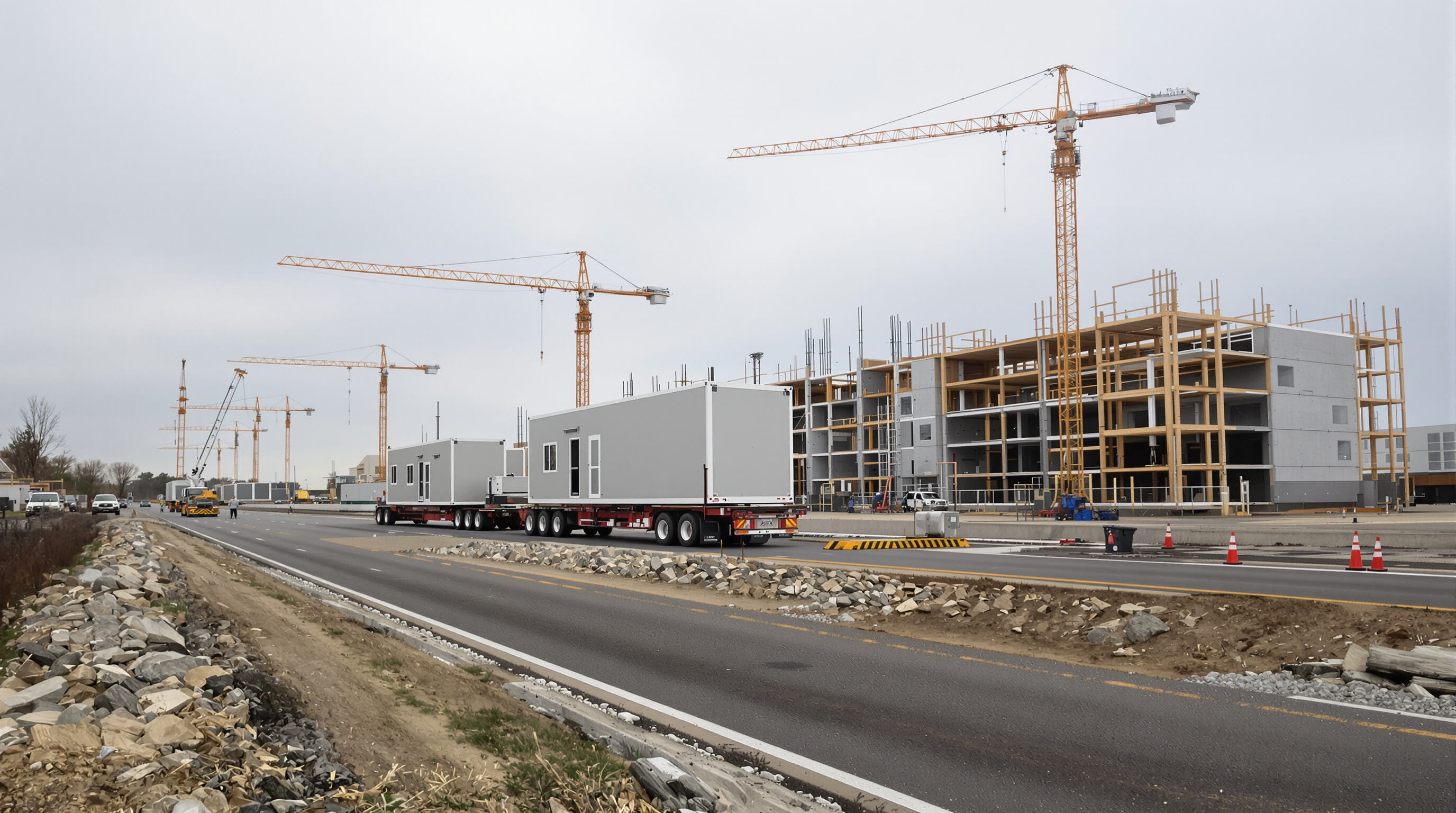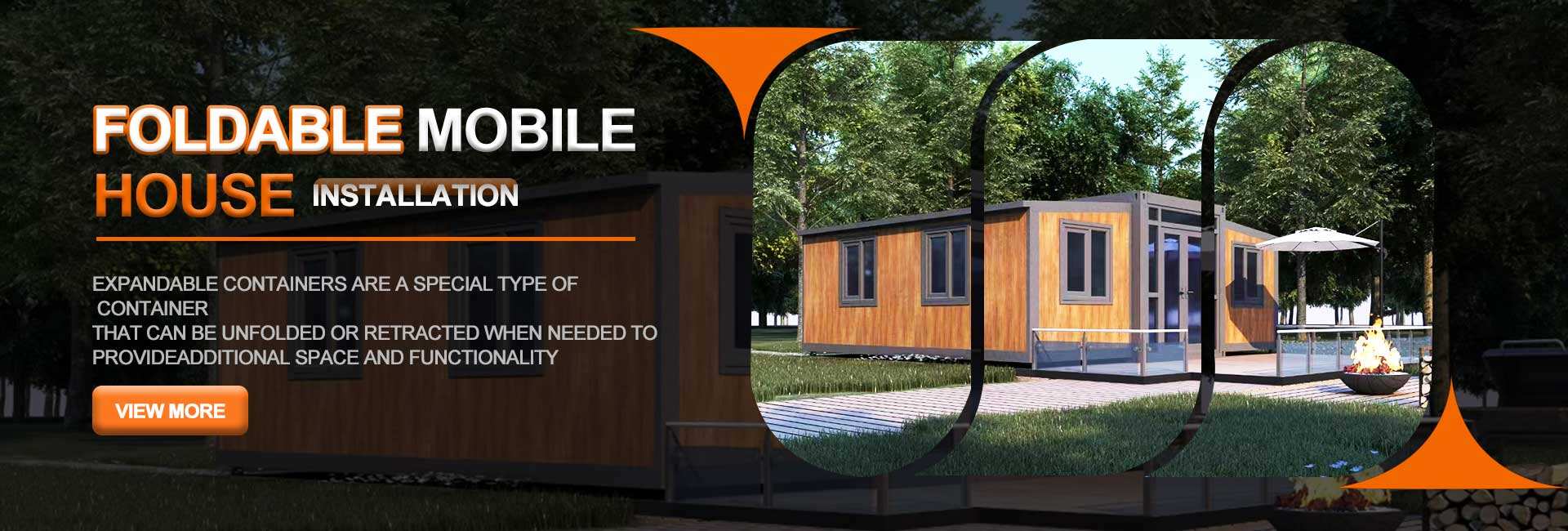Addressing the Affordable Housing Crisis with Prefab Houses
The Growing Affordable Housing Shortage in the United States
The U.S. faces a deficit of 6.8 million affordable rental homes for low-income households, a gap exacerbated by rising construction costs and labor shortages. This shortage disproportionately impacts urban areas, where population growth outpaces housing development.
How Prefab Housing Addresses Supply Gaps in Affordable Housing
Prefab homes are becoming increasingly popular because they can cut down on construction time by roughly half compared to regular building methods. Since these houses are built in factories instead of on site, there's no waiting around for good weather conditions, which saves both time and materials. Developers typically charge between 127 and 189 dollars per square foot for prefabs, which comes out to about 20 percent cheaper than standard construction costs. This kind of efficiency means companies can get more houses built and put them into neighborhoods where demand is really high much quicker than before.
Case Study: Modular Construction in Seattle's Low-Income Housing Projects
A 2024 Seattle initiative utilized modular techniques to complete a 60-unit affordable complex in 8 months—40% faster than traditional construction. The project paired volumetric modules with energy-efficient insulation, achieving Passive House certification while keeping rents 35% below area averages. This demonstrates how modern prefab methods can align speed, sustainability, and affordability.
Trend Analysis: Rising Adoption of Modular Building to Increase Affordable Housing Supply
The modular construction market is projected to grow 8.9% annually through 2030, driven by partnerships between housing authorities and manufacturers. Standardized designs and federal subsidies are enabling states like California and Texas to approve 15–20 modular affordable complexes quarterly, accelerating production at scale.
Cost-Effectiveness and Financial Advantages of Modular Construction

Modular construction offers three primary financial advantages: accelerated timelines (30–50% faster than traditional methods), bulk material purchasing (reducing waste by 15–20%), and labor efficiency through factory-controlled workflows. These benefits directly address the urgent need for scalable affordable housing solutions.
Key benefits of modular construction: Cost savings, shorter timelines, and efficiency
Factory-built homes achieve 10–15% cost savings compared to site-built equivalents by streamlining on-site labor and minimizing weather delays. For example, a 2023 McKinsey study found modular projects completed 6 months faster on average than conventional builds, reducing financing costs by $25–$40 per square foot.
Data comparison: Cost per square foot in traditional vs. factory-built housing
| Metric | Traditional Construction | Modular Construction |
|---|---|---|
| Average Cost/Sq.Ft | $180–$220 | $150–$190 |
| Construction Timeline | 9–12 months | 4–6 months |
| Material Waste | 15–20% | 5–8% |
This efficiency is amplified at scale—projects exceeding 50 units see 22–28% greater savings due to optimized factory throughput.
Upfront investment vs. long-term savings in prefab housing
Modular construction does cost about 8 to 12 percent more initially for design work, but studies looking at the long term picture find that operating costs drop by around 35 to 40 percent over two decades. According to a recent report published in 2024 by CARMi, the Center for Advanced Research in Manufacturing of Infrastructure, this savings comes down to how precisely these buildings are engineered. The tighter construction means fewer places where heat escapes, and tests show modular homes actually insulate about 20 to 30 percent better than regular stick-built houses. When we look at the numbers like this, it becomes clear why prefab options are gaining traction especially in government-funded affordable housing projects where sticking to tight budgets is absolutely essential.
Speed and Construction Efficiency of Prefab Housing

Timeframe Analysis: From Design to Occupancy in Modular Construction
The National Council of State Housing Agencies reported in 2023 that modular construction can cut down on project timelines by roughly between thirty and fifty percent when compared with traditional building methods. Since parts are made in factories while sites get ready at the same time, whole projects that used to take years now often finish within just a few months instead. Take an affordable housing complex with fifty units as an example. With modular techniques, developers usually complete these kinds of projects in about nine to twelve months. But if they stick to conventional construction methods, it tends to drag out much longer, somewhere around eighteen to twenty-four months total.
Efficiency Gains in Off-Site, Factory-Controlled Construction Environments
Factory environments offer protection from weather disruptions and can cut down on wasted materials somewhere around 12 to maybe even 15 percent thanks to precise cutting techniques and better inventory tracking systems. Traditional construction sites face all sorts of problems when different trades work at cross purposes, but in controlled manufacturing settings, things run much smoother. The assembly line approach means electricians handle their rough-in work first, then plumbers come in next without stepping on each other's toes. This kind of organized workflow saves roughly a quarter of the usual labor time per building unit, and guess what? Quality standards actually go up too because everything gets checked at specific points along the production chain.
Case Study: Accelerated Development of Multi-Family Affordable Housing in New Jersey
In Trenton last year, a modular housing project managed to put 84 affordable units on the market within just 11 months, which is about 40 percent quicker compared to similar stick built projects around town. According to the folks who developed this property, they got things moving so fast because they handled permits at the same time as building the modules. They also had way fewer subcontractors dealing with different parts of construction, cutting down coordination headaches by roughly 60%. Plus, everything was timed perfectly so when workers finished preparing the site, the actual modules showed up right then. All these efficiencies saved them almost $290k in holding costs and meant people could start moving into their new homes eight whole months before what's typical for regular construction methods.
Policy Support and Public-Private Collaboration for Scaling Prefab Housing
More government bodies and lawmakers are starting to see what modular construction can do for making affordable housing available on a larger scale. Back in 2024, HUD put aside no small amount - around half a billion dollars actually - to update building regulations specifically for factory-made houses while also speeding things up when it comes to getting permits for these prefabricated buildings. Cities like Seattle have already shown how this works in practice too. Since 2021 they've been approving modular development applications about 20 percent quicker than before according to that recent Urban Land Institute study from last year.
Role of Government and Federal Agencies in Advancing Modular Construction
Federal initiatives now prioritize modular methods through grants for factory expansions and workforce training. For example, the 2024 Affordable Housing Acceleration Program offers developers $15,000 per prefab unit meeting energy efficiency standards, incentivizing both speed and sustainability.
Policy Recommendations: Funding, Tax Incentives, and Building Code Standardization
Three policy shifts could unlock prefab housing's scalability:
| Policy Lever | Current Adoption (2024) | Potential Impact |
|---|---|---|
| Tax Credits | 12 states implemented | 20–30% cost reduction for developers |
| Zoning Reforms | 8 major cities adopted | 15% faster project starts |
| Federal Grants | $2.1B allocated nationally | 45,000 new units/year capacity |
Standardizing nationwide building codes for factory-built components remains critical—34 states still use outdated regulations adding 6–8 weeks to approval timelines.
Public-Private Partnerships Leveraging Prefabricated Construction for Affordable Housing
Collaborations between manufacturers, nonprofits, and state agencies are proving transformative. A 2023 partnership in Seattle delivered 120 low-income modular units 35% faster than traditional methods by combining prefab expertise with streamlined public funding. Such models demonstrate how shared risk frameworks and volume commitments can make prefab housing economically viable at scale.
Overcoming Barriers to Widespread Adoption of Prefab Houses
Regulatory Challenges: Zoning Laws and Outdated Building Codes
Old zoning rules are still holding back prefab housing from really taking off. Across America, about one third of towns have building regulations that actually make things harder for factory made homes. These codes force builders to change designs in ways that don't make sense, wiping out around 15 to 20 percent of what could be saved on costs. Looking at Hong Kong gives us another perspective. Back in 2006, researchers looked into their public housing programs and discovered something interesting: nearly 60% of all modular housing projects ran into delays lasting between 12 and 18 months because of these same zoning issues according to Chiang and others. This shows the problem isn't just local but affects countries worldwide trying to get more affordable housing built faster.
Financing, Labor, and Public Perception Barriers in Modular Construction
Prefab housing is dealing with three main hurdles right now. First off, banks often ask for about 25 percent more money upfront when financing prefab homes than they do for traditional stick built houses, as shown in recent construction finance data from 2023. Then there's the problem of finding enough skilled workers. Around two thirds of manufacturers can't find enough people who know how to do precision welding or properly install panels. And finally, most people still don't get it. A recent national poll found that roughly 4 out of 10 potential home buyers think prefab houses are just fancy trailers even though today's designs use cutting edge engineering techniques that make them just as solid as any conventional home.
Industry Paradox: High Demand for Affordable Units vs. Slow Regulatory Adaptation
Ninety-two percent of American cities are facing serious affordable housing problems right now, yet just eighteen percent have made changes to their zoning laws since 2020 that would actually help with modular building methods. What happens next? Developers end up paying anywhere from twenty-two to thirty-eight dollars extra per square foot just to meet regulations or they give up on developing properties where there's clearly a need. The numbers tell a story here too. Studies show that when policies lag behind, all those benefits of prefabricated homes get wiped out. Most builders say red tape remains their biggest headache even though there's tons of demand for affordable housing options according to research published back in 2016 by Steinhardt and colleagues.
FAQ Section
What is modular construction?
Modular construction involves creating building modules in a factory setting and assembling them on-site to expedite project completion, enhance efficiency, and reduce construction costs.
Why is modular construction cost-effective?
Factory-controlled environments streamline labor, minimize weather delays, and optimize bulk material purchasing, directly reducing costs. Modular projects experience completion timelines that are 30-50% faster than traditional methods.
How do prefab homes impact affordable housing?
Prefab homes enable rapid development and integration into high-demand neighborhoods, addressing supply gaps efficiently in the affordable housing market.
What are current challenges to the widespread adoption of prefab housing?
Challenges include outdated zoning laws, regulatory hurdles, higher financing costs, shortages of skilled labor, and misconceptions of prefabricated homes as lesser-quality dwellings.
What role do government policies play in advancing prefab housing?
Federal and state policies, tax incentives, zoning reforms, and standardized building codes emphasize modular construction's scalability, incentivizing speed and sustainability in affordable housing development.
Table of Contents
- Addressing the Affordable Housing Crisis with Prefab Houses
- Cost-Effectiveness and Financial Advantages of Modular Construction
- Speed and Construction Efficiency of Prefab Housing
- Policy Support and Public-Private Collaboration for Scaling Prefab Housing
- Overcoming Barriers to Widespread Adoption of Prefab Houses
- FAQ Section

